15 years one-stop China custom CNC machining parts factory
 1392 |
Published by VMT at Aug 30 2023
1392 |
Published by VMT at Aug 30 2023
What is 6061 Aluminum Alloy?
6061 aluminum alloy is a versatile and widely used material known for its excellent combination of strength, corrosion resistance, and machinability. It belongs to the 6xxx series of aluminum alloys, which are often referred to as "structural alloys" due to their suitability for various structural applications.
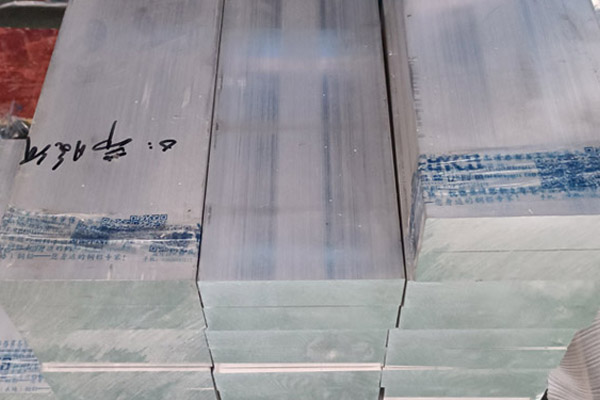
Composition:
6061 aluminum alloy primarily consists of aluminum (Al), with key alloying elements including magnesium (Mg) and silicon (Si). Trace amounts of other elements may also be present to enhance specific properties.
Properties:
Strength: 6061 aluminum offers good tensile strength, making it suitable for applications that require structural integrity.
Machinability: This alloy has excellent machinability, which allows for easy shaping, drilling, cutting, and milling.
Weldability: 6061 aluminum can be readily welded using various methods, although precautions are necessary to avoid heat-induced distortions.
Corrosion Resistance: While not as corrosion-resistant as some other alloys, 6061 aluminum still provides reasonable resistance to corrosion, particularly in certain environments.
Heat Treatability: 6061 can be heat-treated to enhance its mechanical properties and further increase its strength.
The popularity of 6061 aluminum alloy stems from its ability to offer a balanced blend of mechanical properties, machinability, and cost-effectiveness. Its wide range of applications across industries showcases its versatility and value in modern engineering and manufacturing.
What is 5052 Aluminum Alloy?
5052 aluminum alloy is a versatile and widely used material known for its excellent combination of strength, corrosion resistance, and formability. It belongs to the 5xxx series of aluminum alloys, which are often recognized for their non-heat-treatable nature and suitability for various applications.
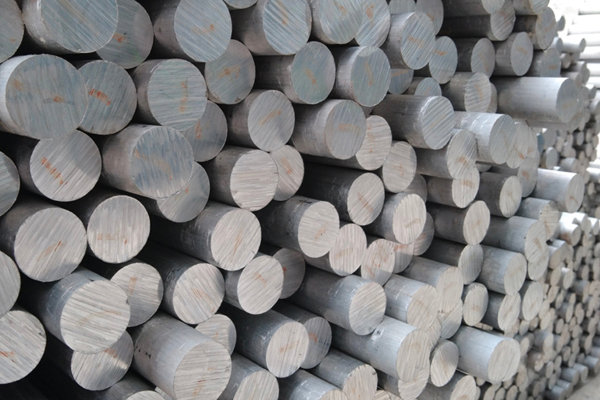
Composition:
5052 aluminum alloy is primarily composed of aluminum (Al), with key alloying elements including magnesium (Mg) and chromium (Cr). Trace amounts of other elements may also be present to enhance specific properties.
Properties:
Strength: 5052 aluminum offers moderate tensile strength, making it suitable for applications that require good formability and bending.
Formability: This alloy has excellent formability, allowing it to be easily shaped, bent, and formed without cracking.
Corrosion Resistance: 5052 aluminum provides excellent corrosion resistance, particularly in marine and harsh environments.
Weldability: It can be easily welded using various methods, although precautions are necessary to avoid heat-induced distortions.
Fatigue Resistance: 5052 exhibits good fatigue resistance, making it suitable for applications subjected to cyclic loading.
The popularity of 5052 aluminum alloy stems from its combination of formability, corrosion resistance, and cost-effectiveness. Its ability to withstand harsh environments and retain its integrity makes it an excellent choice for applications exposed to moisture and corrosive agents.
Advantages of 6061 Aluminum Alloy
6061 aluminum alloy offers a range of advantageous properties that make it a popular choice for various applications across industries. From aerospace to consumer goods, its unique characteristics contribute to its widespread use. Here are some key advantages of 6061 aluminum alloy:
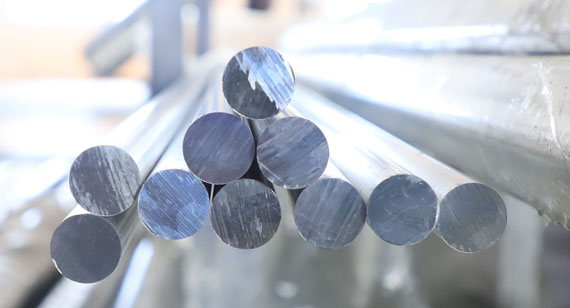
1. Strength: 6061 aluminum alloy exhibits good tensile strength, allowing it to withstand mechanical stresses and loads. This strength is particularly valuable in applications requiring structural integrity and durability.
2. Machinability: This alloy has excellent machinability, making it easy to cut, drill, mill, and shape into intricate components. Its machinability reduces production time and costs.
3. Weldability: 6061 aluminum alloy can be readily welded using various methods, making it suitable for joining components without compromising their structural integrity.
4. Formability: The alloy's formability allows for bending and shaping without cracking or losing its mechanical properties. This feature is valuable for creating complex and customized designs.
5. Corrosion Resistance: While not as corrosion-resistant as some other alloys, 6061 aluminum still offers reasonable resistance to corrosion in many environments, making it suitable for various applications.
6. Thermal Conductivity: 6061 aluminum has high thermal conductivity, making it useful for applications requiring efficient heat dissipation, such as heat sinks in electronics.
7. Versatility: The combination of its properties makes 6061 aluminum alloy versatile and applicable in a wide range of industries, from aerospace and automotive to consumer goods and architectural designs.
8. Heat Treatability: The alloy can be heat-treated to further enhance its mechanical properties, increasing its strength and durability for specific applications.
9. Cost-Effectiveness: 6061 aluminum alloy's availability and processing efficiency contribute to its cost-effectiveness, making it a practical choice for various projects.
10. Recyclability: Aluminum is highly recyclable, and 6061 alloy retains its properties even after recycling, contributing to sustainability and environmental considerations.
Disadvantages:
1. Corrosion Susceptibility: While it offers reasonable corrosion resistance, 6061 is not as corrosion-resistant as some other alloys, especially in harsh environments.
2. Limited Hardness: The alloy's hardness is limited compared to certain other aluminum alloys, impacting its suitability for specific high-strength applications.
3. Not Suitable for High Temperatures: 6061 aluminum may not perform well under high-temperature conditions, as its properties can be affected by excessive heat.
4. Surface Finish Challenges: Achieving a smooth and polished surface finish can be challenging due to the alloy's composition and hardness.
5. Limited Wear Resistance: 6061 may have limited wear resistance in applications where friction and abrasion are significant factors.
In conclusion, 6061 aluminum alloy's advantages, such as strength, machinability, and versatility, make it a popular choice for various applications. However, its susceptibility to corrosion, limited hardness, and other drawbacks should be carefully considered when selecting it for specific projects.
Advantages and Disadvantages of 5052 Aluminum Alloy
5052 aluminum alloy is known for its combination of strength, formability, and corrosion resistance. Like any material, it comes with its own set of advantages and disadvantages. Here's an overview of the pros and cons of 5052 aluminum alloy:

Advantages:
1. Corrosion Resistance: 5052 aluminum offers excellent corrosion resistance, especially in marine and saltwater environments. This makes it ideal for applications exposed to moisture.
2. Formability: The alloy's exceptional formability allows it to be easily bent, shaped, and formed without cracking or losing its properties, making it suitable for intricate designs.
3. Weldability: 5052 aluminum can be easily welded using various methods, which is beneficial for joining components without compromising their integrity.
4. Fatigue Resistance: It exhibits good fatigue resistance, making it suitable for applications subjected to cyclic loading or vibrations.
5. High-Quality Surface Finish: 5052 aluminum alloy can achieve a high-quality surface finish, which is valuable for applications requiring aesthetic appeal.
6. Versatility: The alloy's properties make it versatile for use in various industries, such as marine, automotive, and architectural applications.
Disadvantages:
1. Lower Strength: While it offers moderate strength, 5052 aluminum is not as strong as some other alloys, limiting its use in applications requiring high mechanical stresses.
2. Limited Hardness: Its hardness is relatively lower compared to certain other aluminum alloys, affecting its suitability for specific high-strength applications.
3. Limited Heat Treatment: 5052 is not heat-treatable like some other aluminum alloys, limiting the extent to which its mechanical properties can be enhanced through heat treatment.
4. Not Ideal for High Temperatures: The alloy's performance may be affected at high temperatures, impacting its use in applications where heat resistance is crucial.
5. Limited Wear Resistance: 5052 aluminum may have limited wear resistance in applications where friction and abrasion play a significant role.
6. Lower Machinability: While it is generally machinable, its machinability might not be as exceptional as some other aluminum alloys, leading to potential challenges during machining.
In conclusion, the advantages of 5052 aluminum alloy, including corrosion resistance, formability, and versatility, make it a preferred choice for various applications. However, its limitations in terms of strength, heat treatment, and wear resistance should be considered when selecting it for specific projects.
Comparing 5052 Aluminum And 6061 Aluminum
Chemical Properties of 5052 Aluminum Alloy and 6061 Aluminum Alloy
5052 and 6061 aluminum alloys have distinct chemical compositions that contribute to their unique properties. Let's delve into the chemical characteristics of these two alloys:
5052 Aluminum Alloy
Main Alloying Element: Magnesium (Mg) is the primary alloying element, which enhances corrosion resistance and improves formability.
Other Alloying Elements: Small amounts of chromium (Cr) and manganese (Mn) are also present.
Chemical Composition (%): Typically, 5052 aluminum consists of approximately 97.3% aluminum (Al), 2.2% magnesium (Mg), 0.25% chromium (Cr), and 0.15% manganese (Mn).
Other Trace Elements: Trace amounts of iron (Fe) and silicon (Si) may also be present.
6061 Aluminum Alloy
Main Alloying Elements: Silicon (Si) and magnesium (Mg) are the primary alloying elements, providing strength and heat-treatability.
Other Alloying Elements: Small amounts of copper (Cu), chromium (Cr), and zinc (Zn) are also present.
Chemical Composition (%): Typically, 6061 aluminum consists of approximately 97.9% aluminum (Al), 0.6% silicon (Si), 1.0% magnesium (Mg), 0.28% copper (Cu), and smaller amounts of other elements.
Other Trace Elements: Trace amounts of iron (Fe) and titanium (Ti) may also be present.
Chemical Characteristics
Corrosion Resistance: The magnesium content in both alloys contributes to corrosion resistance. 5052 has better corrosion resistance due to its higher magnesium content.
Formability: The magnesium content in both alloys enhances formability, allowing for bending and shaping.
Heat-Treatability: The magnesium-silicon combination in 6061 enables heat-treatability, allowing for enhanced mechanical properties through heat treatment.
Weldability: Both alloys exhibit good weldability, making them suitable for various welding techniques.
Reactivity: Aluminum forms a protective oxide layer when exposed to air, which helps prevent further oxidation.
In conclusion, the chemical compositions of 5052 and 6061 aluminum alloys influence their properties, such as corrosion resistance, formability, heat-treatability, and reactivity. These characteristics make each alloy suitable for specific applications based on the desired performance and requirements of the project.
Mechanical Properties of 5052 Aluminum Alloy and 6061 Aluminum Alloy
5052 and 6061 aluminum alloys possess distinct mechanical properties that determine their suitability for various applications. Here's a comparison of the mechanical characteristics of these two alloys:
5052 Aluminum Alloy
Tensile Strength: Typically ranges from 31,000 psi (214 MPa) to 41,000 psi (283 MPa), depending on temper.
Yield Strength: Varies between 12,000 psi (83 MPa) and 30,000 psi (207 MPa) based on temper.
Elongation: Offers excellent elongation, typically between 12% and 25%.
Hardness: Generally has a Brinell hardness range of 47 to 67.
6061 Aluminum Alloy
Tensile Strength: Typically ranges from 27,000 psi (186 MPa) to 45,000 psi (310 MPa), depending on temper.
Yield Strength: Varies between 8,000 psi (55 MPa) and 40,000 psi (276 MPa) based on temper.
Elongation: Exhibits reasonable elongation, typically between 8% and 25%.
Hardness: Generally has a Brinell hardness range of 95 to 150.
Comparison:
Strength: 6061 aluminum alloy generally offers higher tensile and yield strength than 5052, making it more suitable for applications requiring load-bearing capabilities.
Formability: Both alloys have good formability, but 5052 might have a slight advantage due to its higher elongation.
Hardness: 6061 aluminum alloy has higher hardness values, indicating better resistance to deformation and wear.
Applications: The choice between the two alloys depends on the mechanical demands of the specific application. 6061 is preferred when higher strength is required, while 5052 is used for less demanding applications where corrosion resistance and formability are paramount.
Temper Influence
Both 5052 and 6061 alloys are available in various tempers, such as O, H32, H34, T6, and more. These tempers significantly impact their mechanical properties, allowing manufacturers to tailor the alloys to suit specific project requirements.
In conclusion, 5052 and 6061 aluminum alloys exhibit differences in their mechanical properties, including tensile strength, yield strength, elongation, and hardness. The choice between these alloys depends on the desired strength, formability, and other mechanical characteristics needed for the intended application.
Corrosion Resistance of 5052 Aluminum Alloy and 6061 Aluminum Alloy
The corrosion resistance of 5052 and 6061 aluminum alloys is a crucial factor in determining their suitability for various environments and applications. Let's compare the corrosion resistance of these two alloys:
5052 Aluminum Alloy
Natural Corrosion Resistance: Offers good resistance to atmospheric corrosion due to its aluminum-magnesium composition.
Marine Environments: Excellent resistance to saltwater and marine atmospheres, making it suitable for marine applications.
Chemical Resistance: Resistant to a range of mild chemicals, but its effectiveness can vary depending on the specific chemical.
6061 Aluminum Alloy
Natural Corrosion Resistance: Provides reasonable corrosion resistance due to the presence of aluminum, but it is not as corrosion-resistant as 5052.
Marine Environments: Offers limited resistance to saltwater and marine atmospheres compared to 5052.
Chemical Resistance: Similar to 5052, 6061 shows resistance to mild chemicals but might be less effective against aggressive chemicals.
Comparison:
5052 Advantage: 5052 aluminum alloy has superior corrosion resistance, particularly in harsh environments like marine and saltwater conditions.
6061 Limitation: While 6061 is not as corrosion-resistant as 5052, it can still perform adequately in mild corrosive environments.
Surface Treatments:
To enhance the corrosion resistance of both alloys, various surface treatments can be applied, such as:
Anodizing: Forms a protective oxide layer on the surface, improving resistance to corrosion.
Powder Coating: Provides a barrier against environmental elements, enhancing protection.
Applications:
5052: Preferred for marine components, transportation equipment, and structures exposed to harsh weather.
6061: Commonly used in aerospace, automotive, and structural applications where moderate corrosion resistance is acceptable.
In conclusion, 5052 aluminum alloy offers superior natural corrosion resistance, particularly in marine environments, making it a preferred choice for applications requiring extended exposure to corrosive conditions. While 6061 aluminum alloy is not as corrosion-resistant, it still finds use in applications where its other mechanical properties are advantageous and the corrosive environment is mild.
Welding Performance of 5052 Aluminum Alloy and 6061 Aluminum Alloy
The welding performance of aluminum alloys like 5052 and 6061 is a critical consideration in various manufacturing processes. Let's compare the welding characteristics of these two alloys:
5052 Aluminum Alloy
Weldability: Exhibits good weldability with common welding methods such as MIG and TIG.
Heat Affected Zone (HAZ): Generally maintains good mechanical properties in the HAZ after welding.
Precautions: Some precautions are necessary to prevent cracking during welding, such as using proper filler materials and minimizing distortion.
6061 Aluminum Alloy
Weldability: Offers good weldability with common welding techniques, but certain precautions should be taken.
Sensitivity: More sensitive to cracking compared to 5052 due to its higher copper content.
Precautions: Proper filler materials, welding techniques, and post-weld heat treatment can help mitigate potential cracking issues.
Comparison:
Ease of Welding: Both alloys are generally considered weldable, but 5052 might be slightly more forgiving in terms of cracking.
Cracking Concerns: The higher copper content in 6061 can make it more susceptible to cracking during and after welding.
Post-Weld Treatment: In some cases, post-weld heat treatment might be necessary for 6061 to minimize the risk of cracking.
Applications:
5052: Often used in welded marine and structural components due to its good weldability and corrosion resistance.
6061: Used in various applications, including aerospace and automotive sectors, where its other mechanical properties outweigh potential welding challenges.
Filler Material:
Choosing the right filler material is crucial for successful welding of both alloys. Filler alloys matching the base material's composition or similar alloys are typically recommended.
Conclusion:
While both 5052 and 6061 aluminum alloys can be welded, 5052 tends to be more forgiving in terms of welding-related cracking. Welding considerations include filler material selection, proper welding techniques, and, in the case of 6061, post-weld heat treatment. Understanding the alloys' welding characteristics helps ensure successful welding processes for various applications.
Cost Comparison: 5052 Aluminum Alloy vs. 6061 Aluminum Alloy
The cost of materials is a significant consideration in material selection for manufacturing applications. Let's compare the cost aspects of using 5052 and 6061 aluminum alloys:
5052 Aluminum Alloy:
Cost: Generally, 5052 aluminum alloy is more cost-effective compared to 6061 due to its lower alloying elements and simpler composition.
Availability: Widely available and often offered at a lower price point due to its common use.
6061 Aluminum Alloy:
Cost: 6061 aluminum alloy tends to be slightly more expensive than 5052 due to its additional alloying elements, which contribute to enhanced mechanical properties.
Added Value: The higher cost might be justified by the improved strength and versatility of 6061 for specific applications.
Comparison:
Affordability: 5052 is often chosen for cost-sensitive applications where good corrosion resistance and moderate strength are sufficient.
Value Proposition: 6061 is selected when the enhanced mechanical properties and higher strength-to-weight ratio provide added value that justifies the increased cost.
Applications and Cost Considerations:
5052: Suitable for applications where cost is a primary concern, such as general fabrication, marine components, and architectural elements.
6061: Chosen for applications requiring higher mechanical properties, like aerospace, automotive components, and structures where strength is crucial.
Summary:
While the cost difference between 5052 and 6061 aluminum alloys might not be substantial, 5052 is generally the more cost-effective choice due to its simpler composition. However, the decision ultimately depends on the specific application's requirements, as the increased cost of 6061 may be justified by its enhanced mechanical properties and versatility. Evaluating the balance between cost and performance is essential to selecting the most suitable alloy for a particular project.
Formability of 5052 Aluminum Alloy vs. 6061 Aluminum Alloy
Formability is a critical aspect when considering aluminum alloys for different applications. Both 5052 and 6061 aluminum alloys exhibit different levels of formability due to their distinct compositions and mechanical properties.
5052 Aluminum Alloy:
5052 aluminum alloy is known for its excellent formability, making it a preferred choice for applications that require intricate shaping and bending. It has a high ductility, which means it can be easily formed into complex shapes without cracking or breaking. This alloy is often used in sheet metal fabrication, automotive panels, and marine components that require deep drawing or bending operations.
6061 Aluminum Alloy:
6061 aluminum alloy offers moderate formability, but it is generally less formable compared to 5052. It has a higher strength and lower ductility due to its alloying elements, which can make it more prone to cracking during severe bending or forming operations. However, its strength properties make it suitable for applications where structural integrity is paramount, such as aerospace components or structural elements in construction.
Comparison:
While 5052 aluminum alloy is better known for its superior formability, 6061 aluminum alloy can still be formed with proper techniques and equipment. The choice between the two alloys for formability depends on the specific requirements of the application. For intricate shapes and deep drawing operations, 5052 is a better choice. However, if a balance between formability and higher mechanical properties is needed, 6061 can still be used effectively with careful planning and handling during forming processes.
Summary:
5052 aluminum alloy excels in formability due to its high ductility, making it suitable for applications requiring complex shapes and deep drawing. 6061 aluminum alloy offers moderate formability and is better suited for applications where strength and structural integrity are essential, even though it may require more careful consideration during forming processes.
Weight Comparison: 5052 Aluminum Alloy vs. 6061 Aluminum Alloy
The weight of materials plays a crucial role in various applications, particularly in industries where lightweight design is essential. Let's compare the weight aspects of using 5052 and 6061 aluminum alloys:
5052 Aluminum Alloy:
Density: The density of 5052 aluminum alloy is approximately 2.68 g/cm³ (0.0965 lb/in³).
Weight: Due to its relatively lower density, 5052 alloy offers a lighter weight per unit volume compared to some other materials.
6061 Aluminum Alloy:
Density: The density of 6061 aluminum alloy is approximately 2.70 g/cm³ (0.0975 lb/in³), which is slightly higher than that of 5052.
Weight: While the density difference is minimal, 6061 alloy is slightly denser, leading to a slightly higher weight per unit volume compared to 5052.
Comparison:
Weight Difference: The difference in weight between 5052 and 6061 alloys is relatively small due to their similar densities.
Impact on Applications: The weight difference might be insignificant for many applications, and other mechanical properties may be more decisive in material selection.
Applications and Weight Considerations:
5052: Often chosen for applications that prioritize lightweight design, such as marine components, lightweight structures, and transportation equipment.
6061: Selected when enhanced mechanical properties are needed, and the small weight difference is outweighed by its higher strength and versatility.
Summary:
The weight difference between 5052 and 6061 aluminum alloys is minimal due to their similar densities. While 5052 is generally associated with lightweight applications, both alloys offer favorable weight characteristics that contribute to their suitability in various industries. When selecting between these alloys, considering other properties and requirements will likely have a more significant impact on the decision than the slight weight difference.
Applications and Uses of 5052 Aluminum Alloy
5052 aluminum alloy is a versatile material known for its excellent corrosion resistance, moderate strength, and formability. Its wide range of applications spans various industries due to its favorable properties. Here are some common applications and uses of 5052 aluminum alloy:
Marine Components: 5052 alloy's exceptional corrosion resistance makes it ideal for marine applications. It is used for boat hulls, decks, and other components exposed to saltwater environments.
Architectural Elements: The alloy is used in architectural projects for facades, roofs, and decorative elements due to its corrosion resistance and aesthetic appeal.
Sheet Metal Fabrication: 5052 aluminum is popular in sheet metal fabrication for its ease of forming and bending. It is used to create panels, cabinets, and enclosures.
Transportation: The alloy is used in transportation industries for making lightweight vehicle parts, such as truck bodies, trailers, and automotive panels.
Cookware: 5052 aluminum's corrosion resistance and food-safe properties make it suitable for manufacturing cookware and kitchen utensils.
Electronic Components: The alloy is used in electronics for its good conductivity and formability, making it suitable for casings and housings.
General Fabrication: 5052 alloy finds applications in general fabrication projects where corrosion resistance, formability, and moderate strength are needed.
Signage: Its ability to take paint well and withstand outdoor conditions makes 5052 alloy suitable for signage and advertising boards.
Pressure Vessels: Due to its high corrosion resistance, 5052 alloy is used in the construction of pressure vessels that store liquids and gases.
Storage Tanks: It is used for storage tanks, silos, and containers that require resistance to chemicals and environmental elements.
Aerospace Components: In aerospace applications, 5052 alloy is used for aircraft panels, structural components, and fuel tanks.
HVAC Systems: The alloy's corrosion resistance makes it suitable for HVAC components exposed to varying weather conditions.
Summary:
5052 aluminum alloy's corrosion resistance, formability, and moderate strength make it a versatile material for a wide range of applications. From marine components to architectural elements, transportation, cookware, and electronics, its properties make it an ideal choice where corrosion resistance, lightweight design, and formability are important considerations.
Applications and Uses of 6061 Aluminum Alloy
6061 aluminum alloy is a versatile and widely used material known for its excellent strength, corrosion resistance, and weldability. Its combination of properties makes it suitable for a variety of applications across different industries. Here are some common applications and uses of 6061 aluminum alloy:
Aerospace Components: 6061 alloy is used in aerospace applications for its high strength-to-weight ratio. It's employed in aircraft frames, wings, and structural components.
Automotive Parts: The alloy is used to manufacture automotive parts, including engine components, chassis, wheels, and transmission housings, due to its strength and durability.
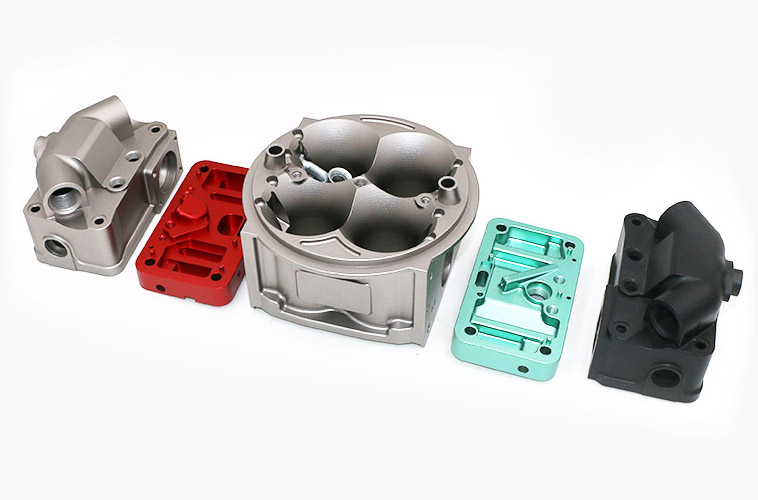
Bicycle Frames: 6061 aluminum alloy is a popular choice for bicycle frames due to its lightweight nature and good mechanical properties.

Marine Applications: Its corrosion resistance makes it suitable for marine environments, where it's used for boat parts like hulls, masts, and fittings.
Structural Components: 6061 alloy is widely used in construction for structural components such as beams, columns, and trusses.
Sporting Goods: The alloy is used in the production of sporting equipment such as golf club heads, fishing reels, and archery bows.
Electronics: 6061 alloy's electrical conductivity and corrosion resistance make it suitable for electronic enclosures, housings, and heat sinks.
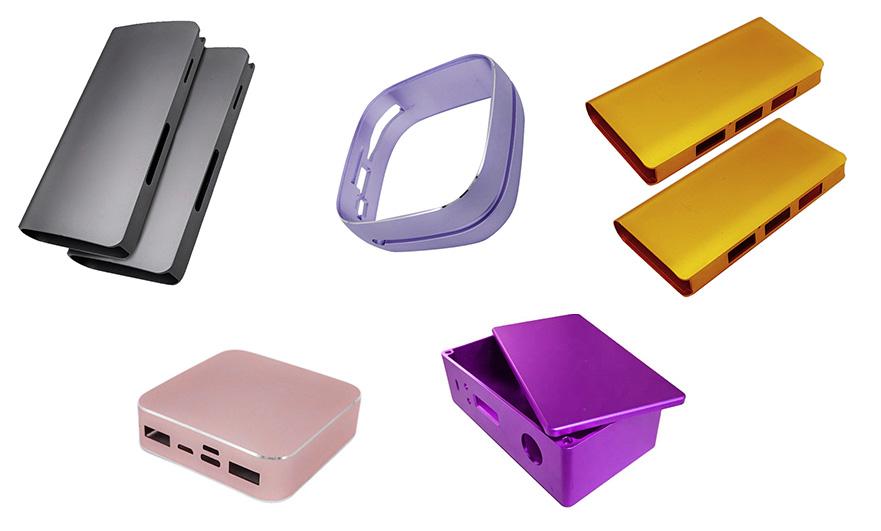
Machined Parts: Its excellent machinability allows 6061 alloy to be used for precision-machined parts in various industries.
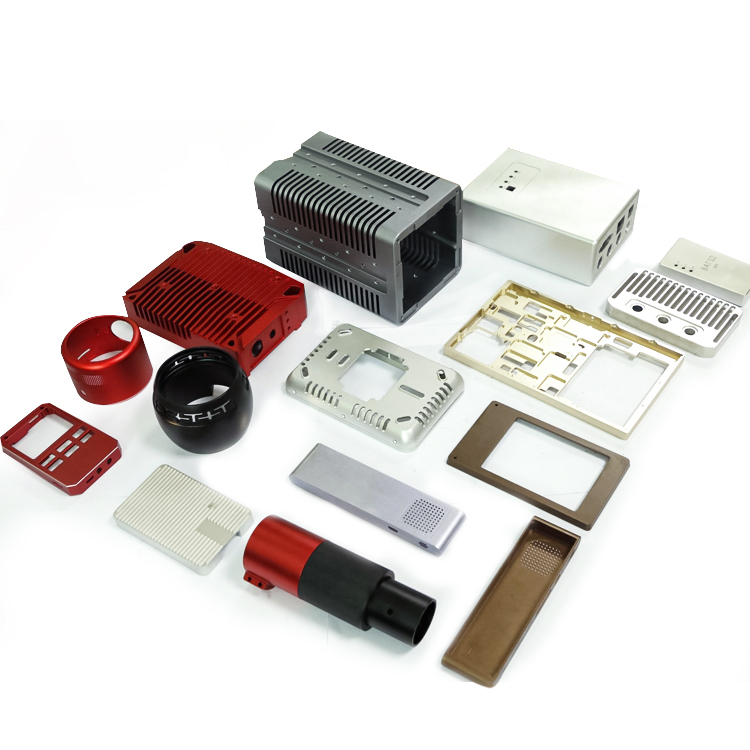
Consumer Goods: The alloy is used to make consumer goods like furniture frames, kitchen utensils, and decorative items due to its appearance and strength.
Truck and Trailer Components: It's used for truck and trailer parts like chassis components, bed liners, and cargo holds due to its durability.
Industrial Equipment: 6061 alloy is used in the manufacturing of industrial equipment such as conveyor systems, machine frames, and enclosures.

Medical Equipment: Its biocompatibility and corrosion resistance make it suitable for medical equipment like surgical instruments and imaging devices.
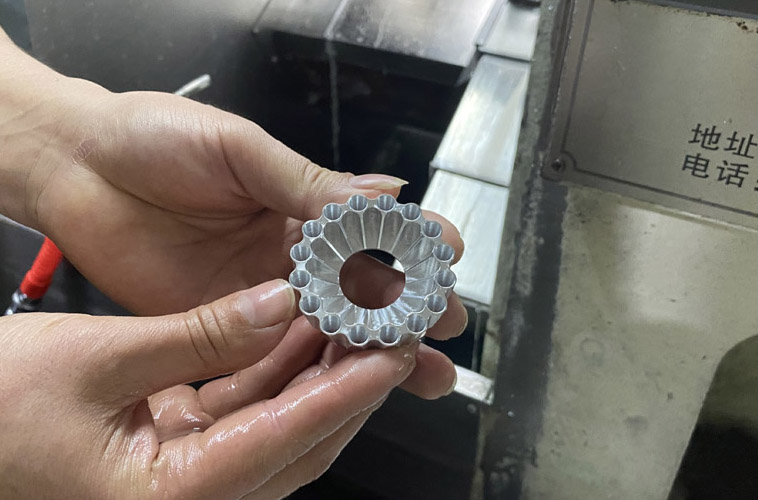
Oil and Gas Industry: The alloy is used in equipment for the oil and gas industry, including pipelines, drilling rigs, and storage tanks.
Summary:
6061 aluminum alloy's exceptional combination of strength, corrosion resistance, and versatility has led to its wide range of applications across various industries. From aerospace to automotive, construction to consumer goods, its properties make it a valuable choice for projects that require strength, durability, and reliability.
Common Questions About 6061 Aluminum and 5052 Aluminum
What are the main differences between 6061 and 5052 aluminum alloys?
Both alloys have different compositions, with 6061 having higher strength and better machinability compared to 5052. 6061 is also heat-treatable, while 5052 is not.
Which alloy is better for marine applications, 6061 or 5052?
5052 aluminum is more commonly used for marine applications due to its superior corrosion resistance, making it better suited for saltwater environments.
Can both alloys be welded easily?
Yes, both 6061 and 5052 aluminum alloys can be welded, but 5052 is considered more weldable due to its lower magnesium content.
What are the typical uses of 6061 aluminum?
6061 is used in aerospace components, automotive parts, bicycle frames, structural components, and more where strength and lightweight properties are crucial.
Is 5052 aluminum suitable for decorative applications?
Yes, 5052 is often used for decorative elements in architecture and signage due to its corrosion resistance and ease of forming.
Which alloy is more suitable for machining?
6061 aluminum is more machinable than 5052, making it a preferred choice for parts requiring intricate machining.
Are both alloys heat-treatable?
Yes, 6061 aluminum is heat-treatable to enhance its mechanical properties, while 5052 is not typically subjected to heat treatment.
Which alloy is more cost-effective?
Generally, 5052 aluminum is more cost-effective due to its lower manufacturing costs and lower material costs compared to 6061.
Can 5052 and 6061 alloys be anodized?
Yes, both alloys can be anodized to enhance their corrosion resistance and provide a decorative finish.
Are these alloys suitable for outdoor applications?
Yes, both alloys offer good corrosion resistance, making them suitable for outdoor applications in varying environments.
Which alloy is more suitable for forming?
5052 aluminum is better suited for forming due to its higher ductility compared to 6061.
Can these alloys be used in the food industry?
Yes, both alloys are safe for use in the food industry due to their non-toxic nature and corrosion resistance.
Summary:
6061 and 5052 aluminum alloys have distinct characteristics that make them suitable for various applications. Understanding their differences in terms of strength, corrosion resistance, machinability, and more can help you make informed decisions when choosing the right alloy for your specific project or application.
